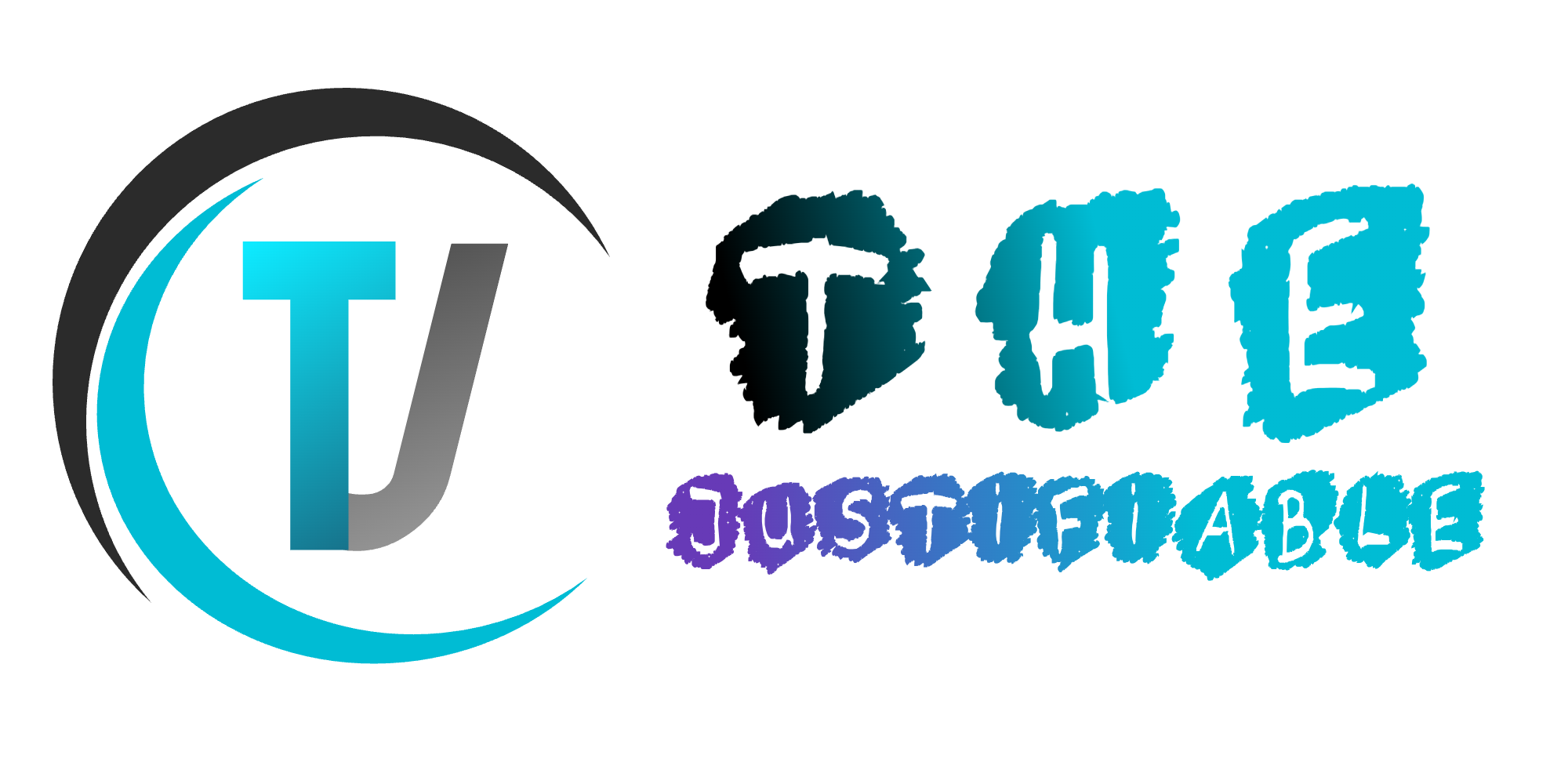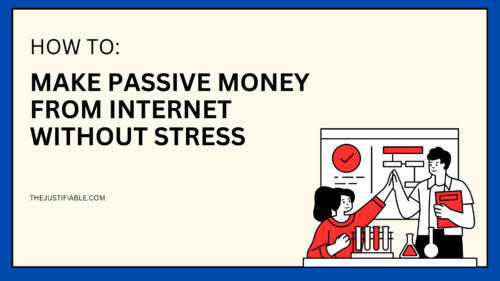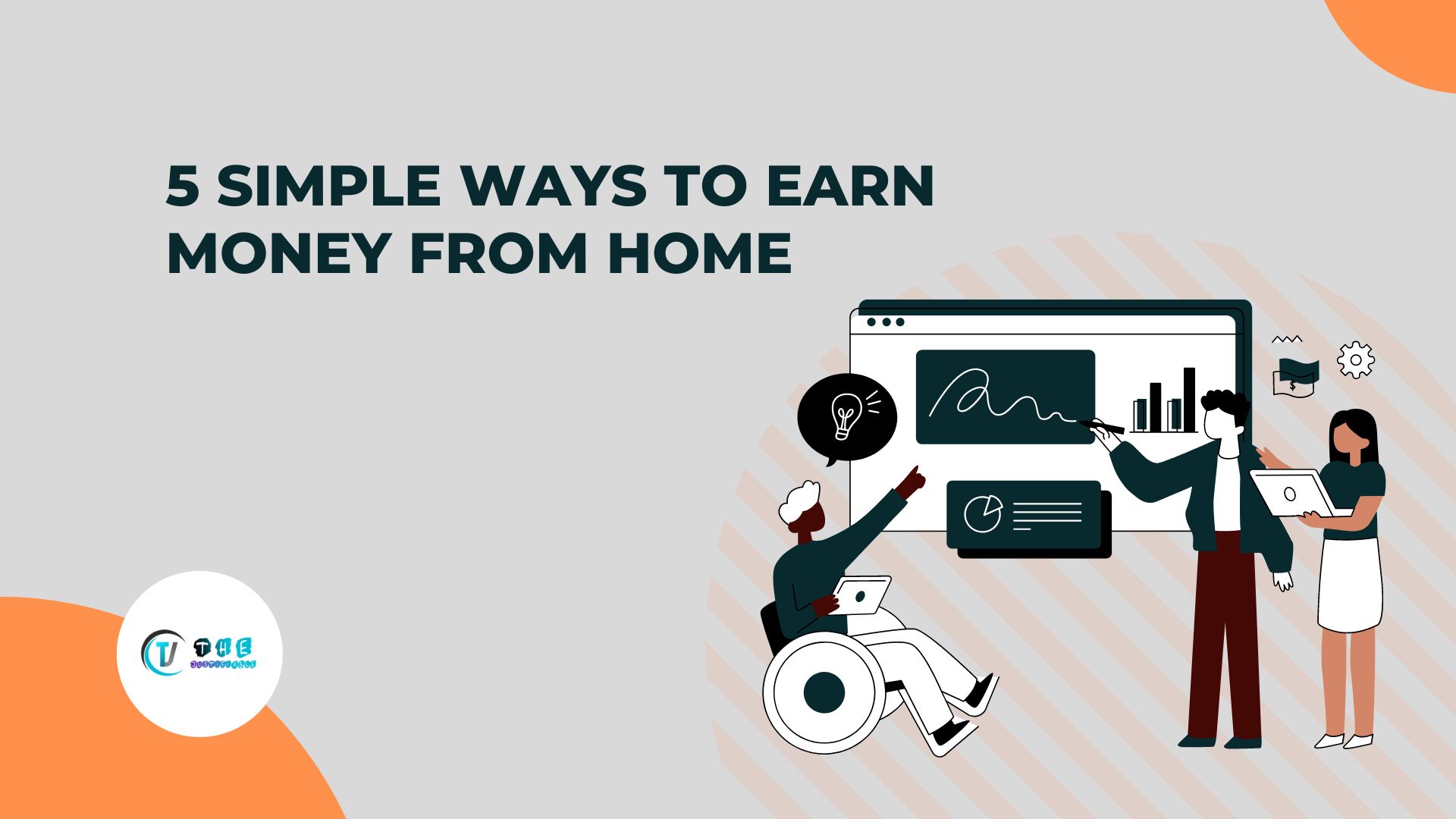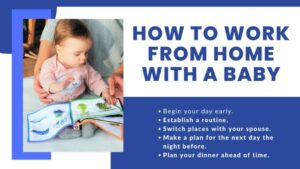Making a blog that actually makes money might sound like a dream, but it’s a reality for thousands of writers, creators, and entrepreneurs today.
The real question is: how do you go from publishing random posts to building a blog that brings in consistent income? Should you focus on traffic first, or monetization? Which strategies actually work, and which are a waste of time?
In this guide, I’ll walk you through proven, step-by-step tips so you can move past guesswork and start building a blog that earns.
Choose A Profitable Blogging Niche That Sells
Finding a niche is where most people trip up. It’s tempting to write about everything you love, but if your goal is making a blog that earns real money, you need to be strategic.
A profitable niche isn’t just about passion; it’s about demand, competition, and how easily that niche can connect to products or services people already spend money on.
Identify Niche Markets With High Earning Potential
When you think about profitable niches, don’t just look at what’s popular—look at what people are already buying. Health, finance, technology, and lifestyle are massive categories, but the money usually sits inside micro-niches. For example:
- Instead of “fitness,” think “home workouts for new moms.”
- Instead of “personal finance,” think “budgeting for freelancers.”
- Instead of “travel,” think “digital nomad travel gear.”
What makes these profitable is not the broad topic but the spending intent. Someone looking for “best budgeting apps for freelancers” is more likely to click affiliate links or buy a product than someone just Googling “how to save money.”
I suggest creating a quick chart for yourself with three columns:
- What I’m interested in writing about.
- What people spend money on in this area.
- Where there’s still space to stand out.
This helps you see overlap between your skills, audience demand, and profitability.
Validate Your Blog Idea With Keyword And Audience Research
This is where a little detective work saves you years of wasted effort. Pull up a keyword tool like Ahrefs, SEMrush, or even free ones like Ubersuggest or Google Keyword Planner. Type in a potential blog topic and look at:
- Search volume: Are enough people searching for it monthly?
- Competition: Is it dominated by massive sites, or do smaller blogs rank?
- Buyer intent: Do keywords include phrases like “best,” “review,” “buy,” or “vs.”?
For audience research, I recommend going beyond keywords. Look at Reddit, Quora, or Facebook groups where your potential readers hang out. Notice the recurring frustrations or questions. That’s your content map.
If you’re looking at “digital nomad travel,” for example, you’ll quickly find threads full of people asking about Wi-Fi speed in Bali or which backpacks fit under budget airline seats. That’s gold. Those pain points become blog posts, guides, or even product reviews.
Narrow Down Your Focus To Stand Out From Competition
The internet rewards specialists, not generalists. If your blog is “all about health,” you’ll get buried by Healthline and WebMD. But if your blog is “nutrition tips for busy nurses working night shifts,” you’ve just carved out a unique space.
A tight focus builds authority faster because readers know exactly why they should follow you. Google also loves topical authority—when it sees a blog covering one subtopic deeply, it rewards it with better rankings.
The trick is making your niche narrow enough to stand out, but not so narrow you run out of ideas. My rule of thumb: you should be able to brainstorm at least 50 blog post ideas in your chosen niche. If you can’t, it’s probably too tight.
Build A Blog On A Reliable Platform
Once you’ve chosen your niche, it’s time to set up the foundation. This is the part people rush through, but your platform is what decides how scalable, fast, and professional your blog looks.
Set Up Hosting That Can Handle Growth
Hosting is like the engine under your blog’s hood. Cheap $2-a-month hosting might look appealing, but when your traffic grows, your site could crash or crawl like a snail.
I recommend starting with hosting that scales, like Hostgator or Bluehost for beginners, or WPengine and Kinsta if you want premium performance.
Here’s a practical example: On Bluehost, once you’re logged in, you can go to Websites > New Website > Start New Website and select WordPress. Within 10 minutes, you’ve got a live blog ready.
Don’t skimp here—speed and uptime directly affect your SEO rankings and user experience.
Pick A User-Friendly CMS Like WordPress
A CMS (content management system) is just the software that runs your blog. WordPress is the industry standard for a reason: it’s flexible, customizable, and supported by thousands of plugins.
From your WordPress dashboard, you’ll see a sidebar with Posts, Pages, Appearance, Plugins. This is where the magic happens:
- Posts = your blog articles.
- Pages = static sections like About, Contact, Privacy Policy.
- Appearance = where you customize your theme and branding
- Plugins = add-ons that give you extra features, like SEO tools or email sign-ups.
If you’re not technical, don’t worry. Most changes are point-and-click, and there’s a huge community for support.
Customize Design For Professional Branding
Your blog’s design sets the tone for trust. A cluttered, generic look screams “hobby blog.” A clean, branded design says, “This is worth your time.”
Use a lightweight theme like Astra or GeneratePress. Both let you drag-and-drop layouts without coding. I suggest uploading a simple logo (you can make one free on Canva), setting brand colors, and choosing clean fonts.
Here’s a quick pro tip: Stick to two fonts max (one for headlines, one for body text) and no more than three brand colors. That way, your blog feels cohesive instead of chaotic.
Create Content That Attracts The Right Audience
Now we get into the heart of making a blog: content. Your articles are the magnet that pulls people in, builds trust, and eventually earns you money.
But not all content is created equal—random journaling won’t cut it.
Write Posts That Solve Real Problems
Think of every blog post as an answer to a specific question your audience is already asking.
If your niche is “budgeting for freelancers,” don’t just write “How To Save Money.” Write “How To Set Up A Quarterly Tax Savings Account As A Freelancer” because that’s the problem your reader is sweating over at midnight.
Break content into simple, skimmable steps. For example:
- Open a separate bank account.
- Automate transfers after each invoice.
- Use an app like QuickBooks to track payments.
This not only builds trust but also positions you as the go-to solution provider.
Use SEO To Get Found On Google
Your readers won’t magically appear—you need SEO. Start with one free tool: Rank Math SEO or Yoast SEO plugin in WordPress. When you create a new post, you’ll see fields under the editor for meta title, meta description, and focus keyword.
Here’s how I usually do it:
- Pick a main keyword (e.g., “freelance budgeting tips”).
- Use it in the title, URL, and first 100 words.
- Add secondary keywords naturally in subheadings.
- Link to your other blog posts (internal links).
SEO isn’t about stuffing words—it’s about matching the language people search with useful answers.
Mix Evergreen Content With Trending Topics
Evergreen posts are long-term traffic drivers—things like “Best Freelance Budget Apps” will stay relevant for years. Trending posts, on the other hand, ride the wave of current buzz—like “How AI Tools Are Changing Freelance Accounting in 2025.”
I suggest a mix: 70% evergreen, 30% trending. That way, your blog builds a stable foundation while staying fresh and relevant.
Pro tip: Set up Google Trends alerts for your niche keywords. You’ll get early signals when a topic is heating up, giving you a head start before everyone else jumps in.
Grow Blog Traffic With Smart Promotion
Getting your blog online is only half the job. The other half is getting people to actually find it.
Promotion doesn’t have to feel spammy — it’s about showing up where your audience already hangs out and giving them a reason to click over.
Leverage Social Media For Consistent Reach
Social media can feel overwhelming, but you don’t need to be everywhere. I suggest choosing one or two platforms where your audience is most active. For example:
- Instagram works well for lifestyle, travel, and food niches.
- LinkedIn is powerful for business and finance content.
- Pinterest drives insane traffic for DIY, fashion, and home blogs.
Consistency matters more than volume. If you’re on Instagram, set aside 15 minutes to post once a day or use a scheduler like Sproutsocial. Add your blog URL in your profile and always point followers to your posts.
Here’s a real trick I use: On Pinterest, instead of just uploading a pin, go to Create > Create Pin, upload your image, and in the “Destination Link” field paste your blog post URL.
Over time, these pins work like little traffic machines because they resurface months later in searches.
Build An Email List For Direct Engagement
Social media traffic is nice, but you don’t own it. An email list is different — it’s a direct line to your readers.
To start, install a free plugin like MailPoet or connect your blog with a service like Mailerlite or Aweber.
From your dashboard, create a simple form: Forms > Create Form > Embed on Site. Add this form to your sidebar or under each blog post.
Now, instead of just saying “Sign up for my newsletter,” offer something irresistible:
- A free checklist
- A short PDF guide
- An exclusive template
Example: If your blog is about freelancing, offer a “Freelance Client Contract Template” as a freebie. This makes sign-ups 5x more likely. Once people are on your list, you can email them new posts, product offers, or affiliate recommendations without depending on algorithms.
Use Guest Posting To Tap Into New Audiences
Guest posting is still one of the fastest ways to grow a new blog. The idea is simple: you write an article for another site in your niche, and they give you a link back. That link drives traffic and boosts your SEO.
Start by making a list of blogs in your space. Look for a “Write for Us” or “Contribute” link, or just email the editor with a friendly pitch. Keep it simple: introduce yourself, share a couple of post ideas, and explain why their readers would benefit.
Pro tip: When you guest post, don’t just write fluff. Share one of your best ideas, and then naturally link to a related blog post you’ve written. Readers who want more will click over — and those clicks are pure gold because they’re already interested in your niche.
Monetize Your Blog With Multiple Income Streams
Traffic is great, but let’s be honest — you’re here because you want your blog to actually make money.
Monetization doesn’t have to be complicated, but you’ll do best if you mix a few income streams instead of relying on just one.
Earn Through Display Ads And Sponsored Posts
Display ads are the simplest way to start. Sign up for Google AdSense if you’re new, or apply to networks like Mediavine or AdThrive once your traffic grows (usually 50k–100k monthly sessions).
The setup is straightforward:
- Apply for the ad network.
- They’ll give you a code snippet.
- Paste it into your WordPress sidebar or header (or use their plugin).
Sponsored posts come next. Brands pay you to write about their product. For example, a budgeting software company might pay you to review their app.
My advice: Only accept sponsored deals that truly fit your niche, or readers will lose trust fast.
Create And Sell Digital Products Or Courses
This is where the big money usually comes in. Digital products don’t require inventory and can be sold 24/7. Ideas include:
- Ebooks
- Templates
- Printables
- Online courses
From your WordPress dashboard, you can use WooCommerce to sell products, or Teachable/Thinkific if you’re offering courses.
Example: A food blogger might create a “7-Day Meal Prep Guide” PDF and sell it for $9. Even if only 100 people buy each month, that’s $900 in mostly passive income.
Offer Affiliate Marketing To Boost Passive Income
Affiliate marketing means you recommend products you already use and earn a commission when readers buy. Awin is the easiest to start, but higher commissions come from specialized programs (like software, hosting, or niche gear).
Here’s how I structure it:
- Write a blog post like “Best Budgeting Apps for Freelancers.”
- Include affiliate links to each app.
- When someone clicks and buys, you earn a cut.
In WordPress, I recommend using the Pretty Links plugin. It turns ugly affiliate links into clean ones (like yoursite.com/go/appname) and helps you track clicks.
The key here is honesty. I always disclose affiliate links and make sure I’ve actually tested the product. Readers can smell fake recommendations from a mile away.
Optimize Blog Performance For Higher Earnings
Making money from a blog isn’t just about traffic and ads. Tiny tweaks to performance can make a massive difference in how much you actually earn.
Improve Website Speed And Mobile Experience
Did you know a 1-second delay in page load can drop conversions by 7%? People simply won’t wait.
To fix this:
- Use a caching plugin like WP Rocket.
- Compress images with Smush or EWWW.io.
- Pick a lightweight theme (Astra, GeneratePress).
On mobile, test your site in Bings’s Mobile-Friendly Test tool. If text looks cramped or buttons are too close, adjust your theme settings in WordPress under Appearance > Customize > Mobile Settings.
Use Analytics To Track What’s Working
Data tells you where the money is. Install Google Analytics or the newer GA4, and connect it to your blog. From your dashboard, go to Reports > Engagement > Pages and Screens. This shows you your top-performing posts.
Now, instead of guessing, you’ll know which articles bring traffic and income. For example, if your “Best Freelance Tools” post is your #1 page, make sure it’s updated regularly, has affiliate links, and links to your products.
I also recommend setting up heatmaps with Hotjar or Microsoft Clarity. They literally show you where people click and where they stop scrolling — eye-opening insights that help you optimize.
Test Headlines, Calls-To-Action, And Layouts
A small change in wording can double your clicks. Tools like Thrive Optimize let you A/B test different versions of a page.
Here’s a simple process:
- Duplicate a blog post headline.
- Make a variation (e.g., “How To Budget As A Freelancer” vs. “Freelance Budgeting Made Simple”).
- Run the test and see which headline brings more clicks.
The same applies to calls-to-action. Test “Download Free Guide” against “Get Your Free Guide” — you’ll be surprised how much one word matters.
Think of your blog like a lab. The more experiments you run, the better your results — and the higher your earnings.
Build Authority And Trust In Your Niche
Once your blog starts attracting readers, the real challenge is building trust. People won’t buy, click, or subscribe unless they see you as a credible voice.
Authority isn’t built overnight, but it grows steadily when you consistently show up with value.
Showcase Expertise Through Case Studies Or Data
One of the fastest ways to stand out is by sharing real-world evidence. Instead of writing “Email lists are important,” show the results from your own blog. For example:
- “When I added a free checklist as a lead magnet, my sign-ups jumped from 15 to 60 a week.”
- “After updating an old post with fresh stats, my organic traffic doubled in two months.”
Screenshots, simple charts, and even before-and-after comparisons add weight to your words. Readers love numbers because they cut through vague advice.
If you don’t have your own data yet, you can document your journey — “I tried posting daily on Pinterest for 30 days, here’s what happened.” Transparency itself builds trust.
Engage With Readers Through Comments And Communities
Blogging isn’t a monologue; it’s a conversation. Replying to comments on your blog and engaging in community spaces (like niche forums, Reddit, or private Facebook groups) shows you’re approachable, not just an authority sitting on a pedestal.
A quick tip: if someone leaves a comment like, “Do you have a template for this?” — treat it as a mini focus group. That’s content or even product inspiration handed to you on a silver platter.
Personally, I’ve seen blog communities grow strong when the writer takes 5 minutes daily to answer comments. That small effort can turn casual readers into loyal followers.
Collaborate With Influencers And Industry Experts
Partnering with others in your niche instantly extends your reach and credibility. Collaboration doesn’t always mean big, expensive partnerships — sometimes it’s as simple as inviting another blogger for a Q&A, recording a joint podcast, or writing a co-authored guide.
From experience, I suggest starting small: send an email that says, “I love your work on X. I’m writing a post about Y — could I include your quick input?” Most people are happy to contribute, and you benefit by associating your content with established voices.
Scale Your Blog Into A Sustainable Business
At some point, your blog stops being just a personal project and starts becoming a real business. Scaling is about creating systems that free up your time while growing revenue steadily.
Outsource Tasks To Free Up Creative Time
You don’t need to do everything yourself forever. Outsourcing doesn’t have to be expensive — you can hire a virtual assistant on Upwork or Fiverr for tasks like formatting posts, creating Pinterest pins, or scheduling social media.
For example, I once spent three hours a week creating blog graphics. Hiring someone for $50 a month freed that time so I could focus on writing high-quality posts. That trade-off paid for itself because more content meant more traffic and income.
If you’re nervous about outsourcing, start small with repetitive tasks. Keep writing your own posts at first — your voice is your blog’s brand.
Diversify Income With New Products Or Services
Once your blog is stable, don’t depend on just ads or affiliates. Think about adding layers of income:
- Offer coaching or consulting.
- Create advanced paid courses.
- Build subscription-based memberships.
For instance, a food blogger could sell an ebook of recipes, then later launch a paid community with weekly meal plans. Each new stream builds resilience — so if ad rates dip or affiliate programs shut down, your business keeps running.
Plan For Long-Term Growth With A Content Strategy
Random posting eventually hits a wall. To scale, you need a strategy. I recommend mapping out content in three buckets:
- Traffic drivers — SEO-optimized guides that bring in new readers.
- Trust builders — personal stories, behind-the-scenes, or tutorials that deepen loyalty.
- Money makers — posts designed to convert (product reviews, affiliate roundups, or sales funnels).
Even a simple 3-month content calendar in Google Sheets can keep you consistent and focused on growth.
Common Mistakes To Avoid When Making A Blog
Every blogger makes mistakes, but some can set you back months if you don’t catch them early. Here are three I’ve seen (and made myself).
Chasing Traffic Instead Of Solving Problems
It’s tempting to obsess over page views. But traffic without purpose doesn’t pay the bills. I’ve had posts go “viral” on social media with thousands of views, yet earn nothing because they weren’t aligned with my niche or monetization strategy.
Instead, focus on solving problems your target audience is actively searching for. Quality over vanity numbers.
Relying On One Income Stream Alone
Depending only on ads or one affiliate program is risky. I’ve known bloggers who woke up to an email saying their affiliate program shut down, and overnight their income vanished.
Diversify early — even small. Maybe you earn $100 from ads, $200 from affiliates, and $150 from your own product. That’s $450 and none of it disappears if one source dries up.
Ignoring Consistency And Reader Relationships
Consistency builds momentum. If you disappear for three months, readers drift away and Google stops seeing you as active.
I’m not saying you have to post daily, but pick a schedule you can maintain. Weekly? Biweekly? Stick with it. And don’t treat readers as numbers — answer emails, reply to comments, and show them you value their attention. That relationship is what makes them buy from you later.
Expert Tips To Keep Your Blog Profitable
Once your blog is making money, the goal shifts from “how do I earn” to “how do I sustain and grow.” These are the principles I lean on.
Treat Your Blog Like A Real Business From Day One
If you want your blog to earn like a business, treat it like one. That means:
- Track income and expenses (use a tool like Wave or FreshBooks).
- Keep a separate business bank account.
- Set aside taxes early (trust me, tax season is easier when you do this).
A blog may start as a side hustle, but when you view it as a professional venture, you make smarter long-term decisions.
Reinvest Profits Into Growth And Tools
It’s tempting to pocket your first $500, but reinvesting speeds up growth. Spend money where it saves time or boosts quality — faster hosting, better design tools, or hiring help.
For example, upgrading to premium hosting reduced my site load time by 3 seconds. That small change increased my ad revenue because visitors stayed longer.
Keep Learning And Adapting To Market Shifts
The blogging world changes constantly — new platforms, shifting algorithms, evolving reader habits. The bloggers who last aren’t the ones who nailed one trick, but the ones who keep learning.
I recommend setting aside an hour each week to study — whether that’s SEO updates, experimenting with short-form video, or learning email automation. Think of your blog as a living project, not a finished product.






